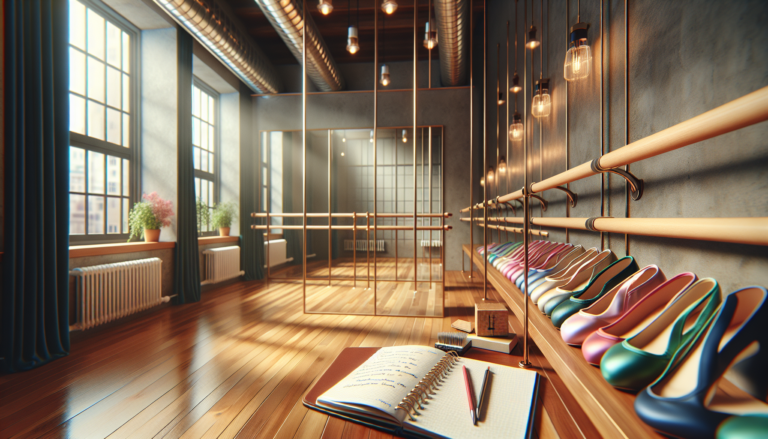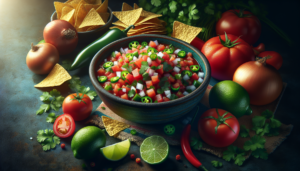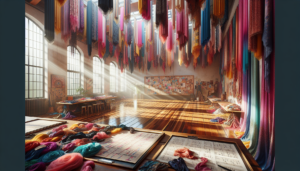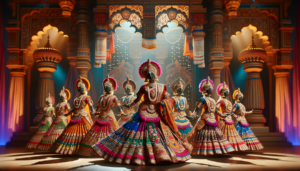Dance choreography is the art of creating and arranging dance movements into a cohesive and expressive routine. It involves a deep understanding of music, rhythm, and the human body’s capabilities. A well-crafted choreography can captivate audiences, evoke emotions, and tell a compelling story through the medium of dance.
Introduction to Dance Choreography
What is Dance Choreography?
Dance choreography is the process of designing and arranging a series of dance movements and patterns to create a structured performance. It combines various elements such as space, time, energy, and style to express ideas, emotions, or narratives through the dancers’ bodies. Choreographers work closely with dancers to bring their creative vision to life on stage or screen.
The Importance of Choreography in Dance
Choreography plays a crucial role in the world of dance. It provides structure, meaning, and artistic expression to a dance performance. A well-choreographed routine can:
- Showcase the dancers’ technical skills and abilities
- Create visual interest and engage the audience
- Convey a specific theme, story, or emotional message
- Enhance the overall impact and memorability of the performance
Without effective choreography, a dance piece may lack coherence, purpose, and the ability to connect with the audience on a deeper level.
Essential Tips for Creating Stunning Dance Routines
Understanding the Music
The foundation of any great dance routine lies in the music. As a choreographer, it’s essential to have a deep understanding and appreciation for the musical composition you’re working with. Listen closely to the rhythm, melody, and dynamics of the music to identify key moments and phrases that can inspire and guide your choreography.
Consider the genre, tempo, and mood of the music when selecting movements and styles that complement the audio. The choreography should harmonize with the music, creating a seamless and synergistic experience for the audience.
Incorporating Diverse Dance Styles
One way to create visually interesting and engaging choreography is by incorporating a variety of dance styles and techniques. Drawing from different genres such as ballet, jazz, hip-hop, contemporary, or cultural dances can add depth and complexity to your routine.
Mixing and blending styles allows you to create unique combinations and transitions that keep the audience engaged. It also showcases the versatility and range of the dancers, highlighting their ability to adapt to different movement vocabularies.
Focusing on Timing and Energy
Timing and energy are fundamental aspects of effective choreography. Timing refers to the precise synchronization of movements with the music’s rhythm and phrasing. It involves hitting specific beats, accents, or musical cues to create a sense of unity between the dance and the music.
Energy, on the other hand, refers to the intensity, dynamics, and quality of the movements. Varying the energy levels throughout the routine creates contrast and keeps the audience engaged. Incorporating sharp, explosive movements alongside fluid, graceful ones adds visual interest and emotional depth to the performance.
Techniques for Effective Dance Choreography
Using Space and Form
The use of space and form is a key element in creating visually compelling choreography. Space refers to the area in which the dancers move, including the stage, floor patterns, and levels. Utilizing different spatial arrangements, such as formations, lines, circles, or asymmetrical groupings, adds visual interest and creates a sense of depth and dimension.
Form, on the other hand, relates to the shape and structure of the dancers’ bodies in space. Experimenting with various body shapes, lines, and symmetry can create striking visual compositions that draw the audience’s attention.
Creating Emotional Connection
Great choreography goes beyond technical execution; it also evokes emotions and forges a connection with the audience. Incorporating expressive movements, facial expressions, and gestures can convey the desired mood or narrative of the piece.
Encourage dancers to embody the emotions and intention behind each movement, allowing their individual interpretations to shine through. When dancers genuinely connect with the choreography on an emotional level, it translates to a more authentic and impactful performance.
Collaborating with Dancers
Collaboration is a vital aspect of the choreographic process. While the choreographer may have a clear vision, it’s essential to involve the dancers in the creative journey. Encourage open communication and allow dancers to contribute their ideas, experiences, and unique movement styles.
Collaborative choreography fosters a sense of ownership and investment among the dancers, leading to more passionate and committed performances. It also allows for the exploration of new ideas and the refinement of existing ones, resulting in a richer and more dynamic final product.
Case Study: Kyle Hanagami’s Choreography for Dua Lipa’s ‘Houdini’
Overview of the Choreography
Kyle Hanagami’s choreography for Dua Lipa’s ‘Houdini’ is a perfect example of effective and engaging dance composition. The routine showcases a blend of various dance styles, including hip-hop, contemporary, and jazz, creating a visually stunning performance.
The choreography is intricately synchronized with the music, hitting key beats and accents that amplify the energy and impact of the movements. Kyle’s use of dynamic formations, levels, and partner work adds depth and visual interest to the routine.
Key Elements of the Routine
One of the standout elements of the ‘Houdini’ choreography is the seamless integration of the dancers’ individual styles and personalities. Kyle Hanagami skillfully highlights each dancer’s strengths, allowing them to shine while maintaining a cohesive ensemble.
The routine also incorporates a mix of sharp, precise movements and fluid, expressive gestures, creating a captivating contrast. The use of intricate footwork, isolations, and body control demonstrates the technical proficiency of the dancers.
| Element | Description |
|---|---|
| Musicality | The choreography is perfectly synchronized with the music, enhancing the overall impact. |
| Diversity of Styles | The routine incorporates various dance styles, showcasing the dancers’ versatility. |
| Formations and Levels | The use of dynamic formations and levels adds visual interest and depth to the performance. |
| Emotional Expression | The dancers embody the emotions and energy of the music, creating a powerful connection with the audience. |
Audience Engagement and Feedback
The response to Kyle Hanagami’s choreography for ‘Houdini’ has been overwhelmingly positive. The YouTube video showcasing the routine has garnered millions of views and thousands of comments, with viewers praising the creativity, energy, and skill displayed by the dancers.
Many viewers have expressed their admiration for the choreography’s ability to capture the essence of the music and create a visually captivating performance. The positive feedback is a testament to the effectiveness of Kyle’s choreographic approach and the talent of the dancers involved.
Conclusion: Mastering Dance Choreography
Continuous Learning and Practice
Becoming a skilled choreographer is an ongoing journey that requires dedication, practice, and a willingness to learn and grow. Continuously seek out new sources of inspiration, whether it’s attending dance performances, watching videos, or collaborating with other artists.
Practice regularly to refine your choreographic skills and experiment with different styles, techniques, and creative approaches. Embrace feedback from dancers, peers, and mentors to identify areas for improvement and further develop your craft.
Staying Inspired and Creative
Maintaining a fresh perspective and staying inspired is crucial for creating innovative and impactful choreography. Explore various artistic mediums, such as music, visual arts, literature, or nature, to find new sources of inspiration.
Keep an open mind and be willing to take creative risks. Push the boundaries of traditional choreographic conventions and explore unconventional ideas that challenge both yourself and the audience.
Remember that dance choreography is a powerful tool for storytelling, self-expression, and connecting with others. Embrace your unique voice and vision as a choreographer, and strive to create routines that leave a lasting impact on those who experience them.






